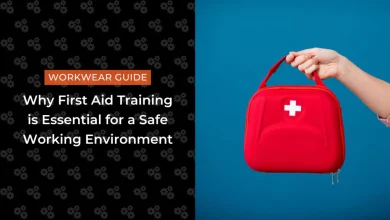How to avoid a speeding ticket with plate tech
Speed cameras are no longer just hidden on highways. They’re everywhere — at traffic lights, toll booths, residential zones, and even mounted on moving police vehicles. These systems operate day and night, often without drivers realizing they’ve been recorded. For many drivers, especially those who value privacy or drive long distances, the question is no longer “Will I get a ticket?” but rather, “How do I avoid speed cameras without breaking the law?”
Modern technology offers a number of options aimed at license plate protection, helping reduce the risk of automated fines — especially when enforcement relies heavily on plate visibility rather than live officer interaction. From blackout license plate covers to remote-controlled shielding systems, plate tech is evolving fast.
The Rise of Automated Enforcement and License Plate Protection
Automated license plate recognition (ALPR) and speed cameras have made traffic enforcement more efficient — and more aggressive. These systems capture your plate, match it with databases, and issue tickets with no human interaction.
Today’s drivers are looking for forms of license plate protection that reduce machine visibility without modifying the plate itself.
Common use cases include:
- Avoiding speed camera errors in poorly marked zones
- Reducing exposure to ALPR in high-surveillance areas
- Minimizing online visibility for content creators
- Preventing plate cloning or identity theft
This has triggered demand for non-invasive solutions — especially those that help avoid speed camera detection in unclear zones.
What Is a Blackout License Plate Cover and How Does It Work?
A blackout license plate cover is a film or device that conceals a plate from some cameras. It may use tinted materials or electrochromic layers that darken on command.
Some license plate blackout systems use thin films that disrupt infrared or flash-based capture — making the plate unreadable in the split second most speed cameras rely on.
They don’t block visibility to humans. Instead, they’re designed to interfere with ALPR and toll cameras.
In systems like Alite Blackout – https://alitehub.com/products/blackout-license-plate-hider-for-usa-single , the film can switch states in under a second — hiding the plate only when needed.
These systems are passive in appearance but highly active in function. Some incorporate smart light-filtering layers that adapt to external triggers like flashes or IR beams. This makes them particularly effective in dynamic environments where cameras operate unpredictably.
License Plate Cover with Remote: Smart Control for Plate Privacy
A license plate cover with remote allows drivers to control visibility in real time. These systems typically use a motorized bracket or screen that activates at the press of a button — instantly flipping, sliding, or darkening the plate.
Some designs rotate horizontally or vertically, while others use smart materials that reduce glare or reflectivity. This makes them highly effective against ALPR systems and overhead surveillance tools.
Beyond function, these tools contribute to plate privacy in dynamic environments — giving drivers the freedom to manage when and how their plate is exposed. Whether in controlled settings or privacy-focused contexts, remote covers combine high-tech convenience with visual minimalism.
When Plate Tech Helps Avoid Speed Cameras
Most speed cameras rely on short exposures — just enough to catch the plate. That makes license plate blackout tools useful when timed correctly.
Situations where tech helps:
- Poorly marked speed traps
- Toll booths with flash ALPR
- Temporary mobile enforcement
- Residential zones with night cameras
A blackout license plate cover or smart film may reduce reflectivity enough to cause an OCR error. Drivers sometimes also use positioning (like trailing larger vehicles) to reduce scan success.
In some modern systems, such as electrochromic films or precision shutters, the timing is critical. When synced correctly, these systems can obscure the plate for only a fraction of a second — just enough to avoid speed camera detection without prolonged concealment. This level of responsiveness offers a practical balance between compliance and control. It’s especially valuable for vehicles frequently traveling through automated corridors or areas prone to sudden camera-triggered fines.
This isn’t about evasion — it’s about reducing unnecessary exposure in automated zones.
Privacy-First Driving with License Plate Protection
As surveillance expands, license plate protection is becoming essential for privacy-conscious drivers. ALPR scanners, toll readers, and infrared speed cameras track vehicles in real time — often without visible signs.
Tools like a license plate cover with remote offer instant control over plate visibility, helping reduce unwanted exposure while keeping the plate intact.
Smart use cases include:
- Routes with dense ALPR coverage
- Filming or testing in private conditions
- Minimizing tracking during content creation
- Short-term visibility reduction in monitored areas
These systems provide a discreet, effective way to avoid speed camera detection in over-surveilled zones. With the right tech in place, drivers stay in control of how, when, and where their license plate is scanned.
Smart Defense, Not Evasion
Modern plate tech isn’t about breaking laws — it’s about license plate protection in an automated world. With tools like the blackout license plate cover and license plate covers with remote activation, drivers are taking control over how and when they’re scanned.
Used responsibly, they help avoid speed cameras that misfire or trigger unfairly. They’re part of a shift toward privacy-first driving — matching tech with smarter safeguards.




